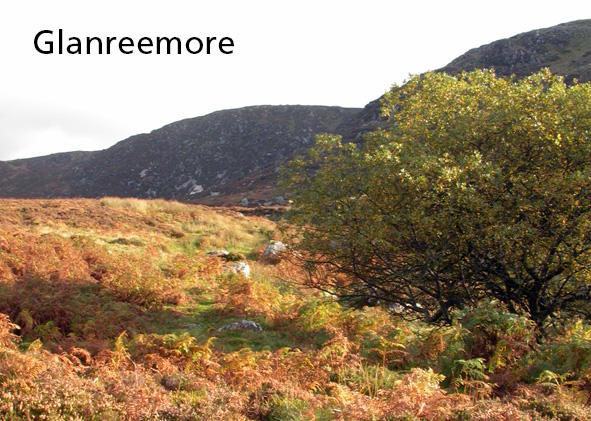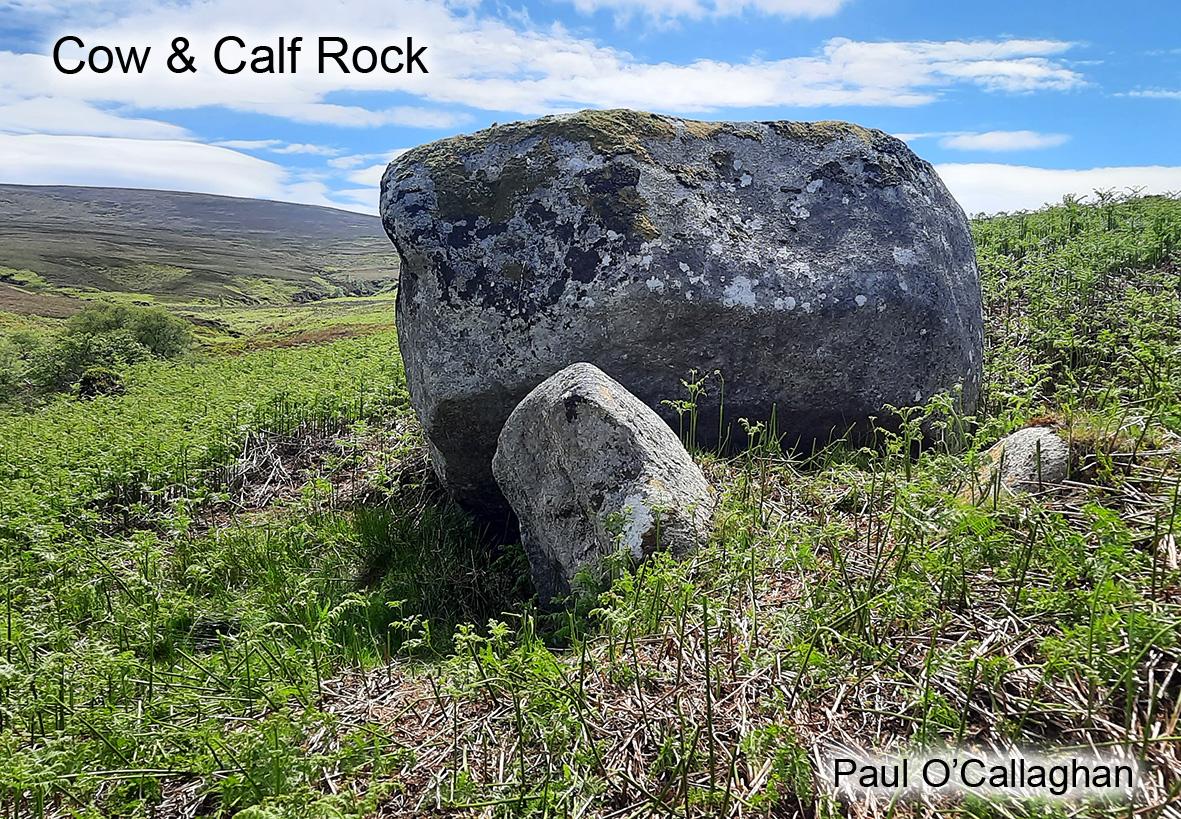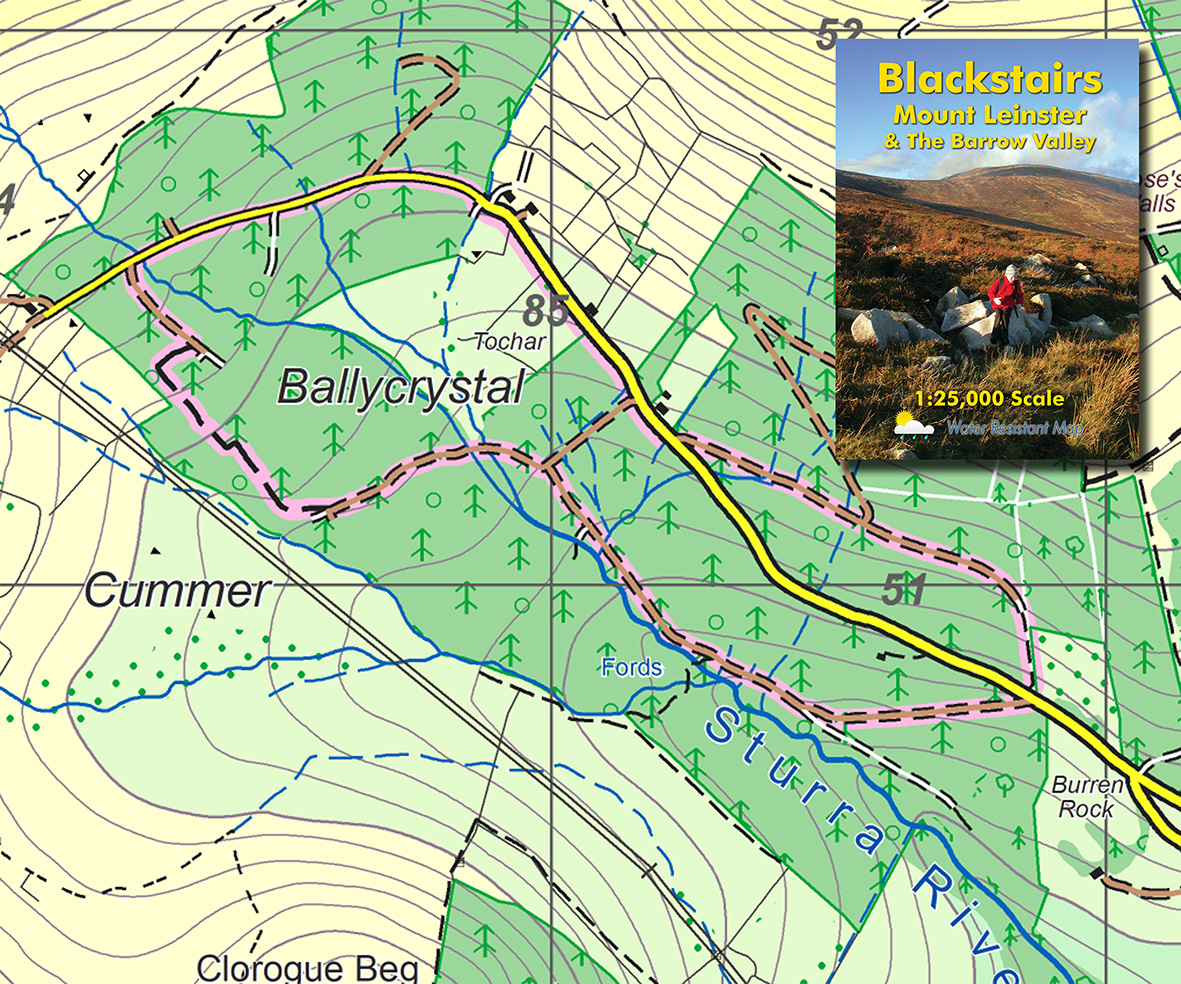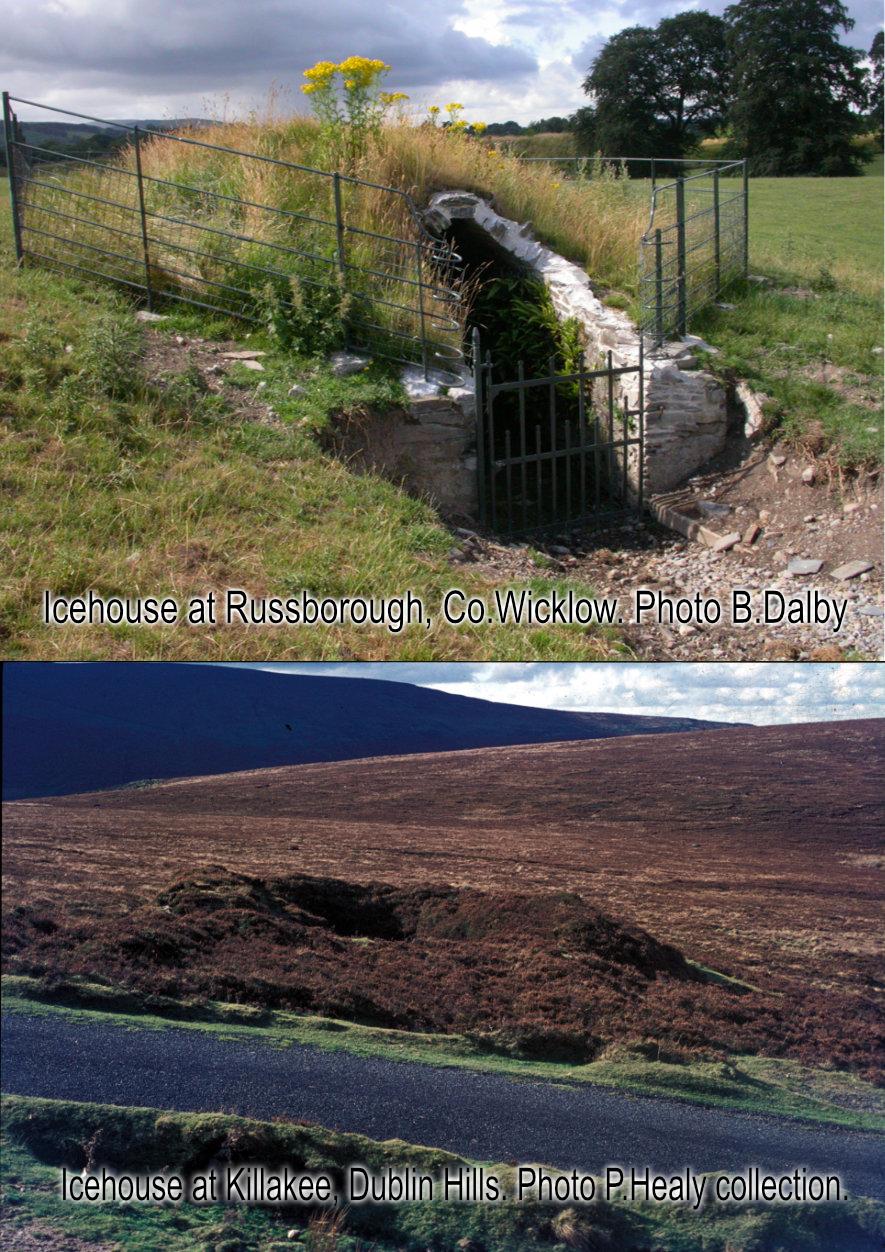Glanreemore & Glanreebeg
Liam Price considered that the name Unry was preserved in the name Glanree, which is one of the subsidiary valleys draining into the Kings River. This could be the case, though you couldn’t claim on topographic grounds that this is the source or even the largest tributary of the Kings River.
You could also speculate that the name Glanree has connections to the death of Art O’Neill there in 1592 – the glen of the king or prince. However it may have other more commonplace origins – the Irish for heather is fraoch. Glanree could represent Gleann Fhraoigh as the f sound become silent and the pronunciation would become like Glan-ree. Likewise it could be from Gleann Riabhach, which is often anglicised as -reagh, a common term meaning grey or brindled or swarthy – perhaps a reference to the extensive rock slabs that colour the west flank.
You’ll find Glanreemore (large Glanree) on the OS six inch maps but Price was also informed of a Glanreebeg (little Glanree). It’s clear in his notebooks that he was uncertain of where Glanreebeg was, but in his Placenames of County Wicklow he settles for the steep valley which ascends from the Art O’Neill memorial. However evidence from Con Costelloe notes (historian from Naas who had house up near Wicklow Gap) and which I’ve corroborated on the ground with the farmer who grazes the area, gives that Glanreebeg is the name of the valley to the west of Glanreemore. It carries the stream labelled as the Asbawn Brook on the OS but in the lower parts, this should more correctly be called the Glanreebeg Brook.




